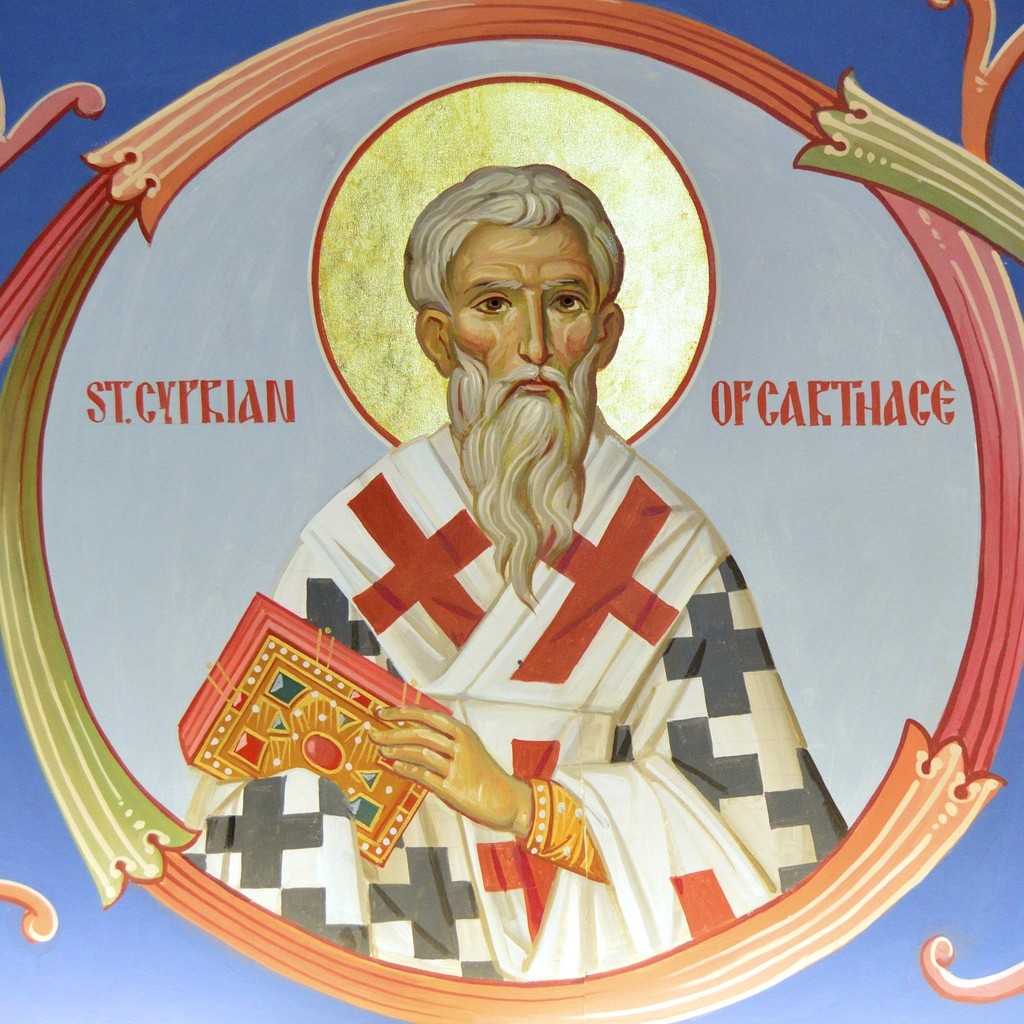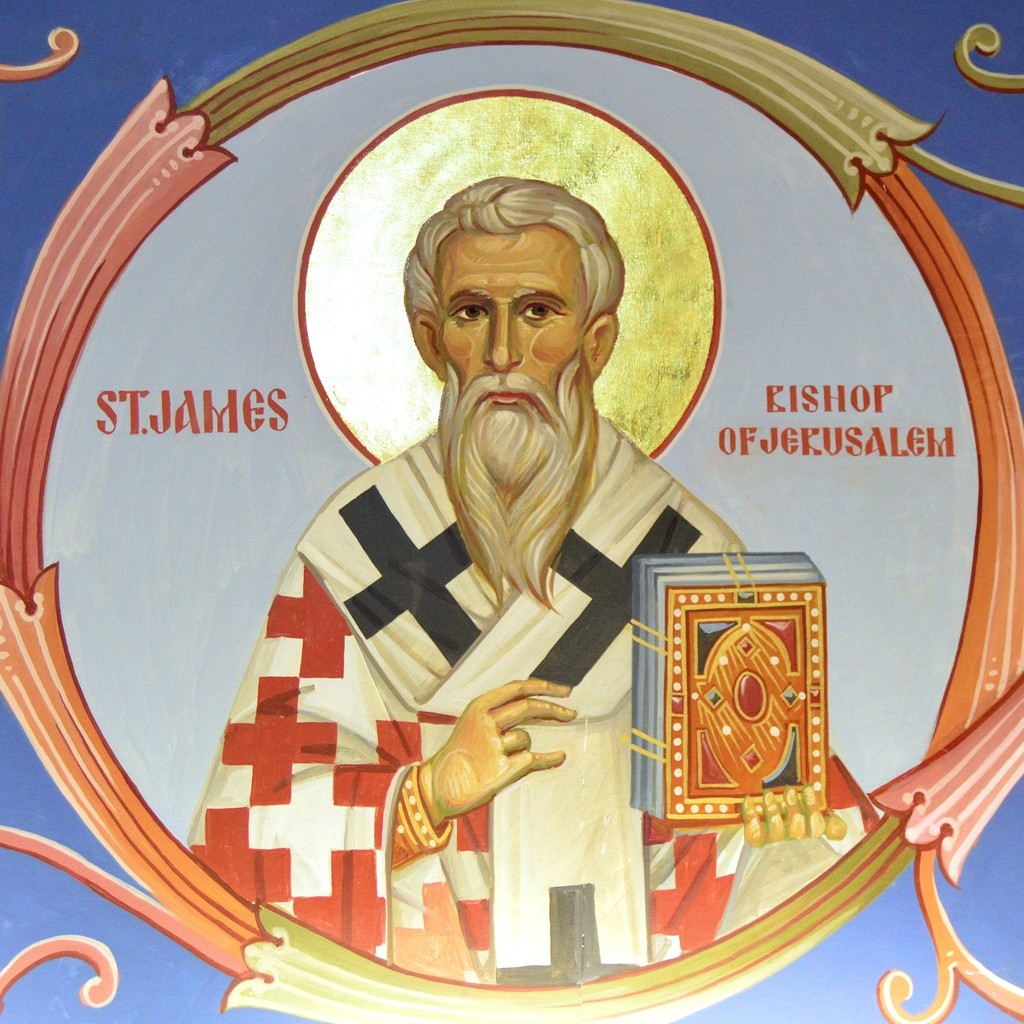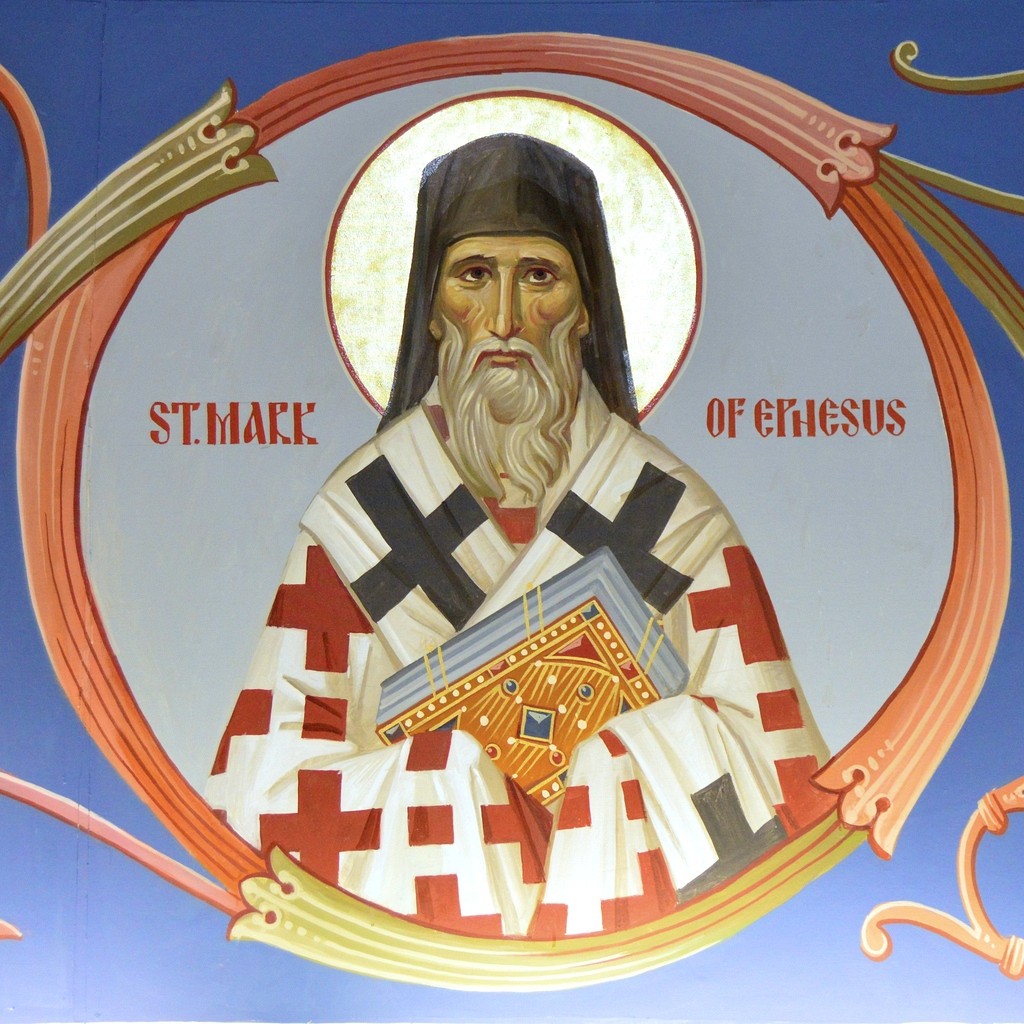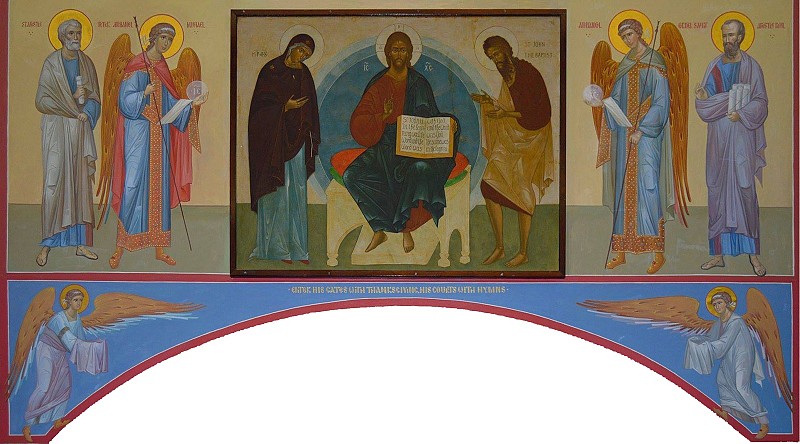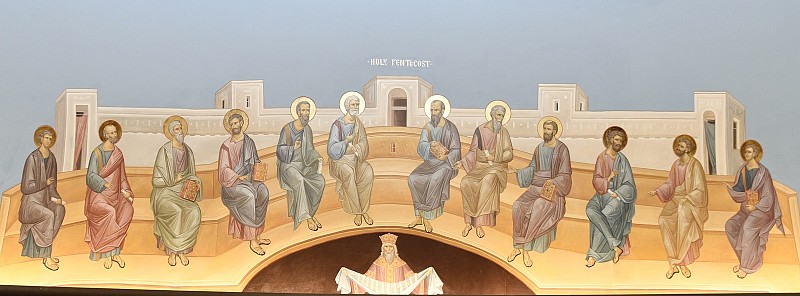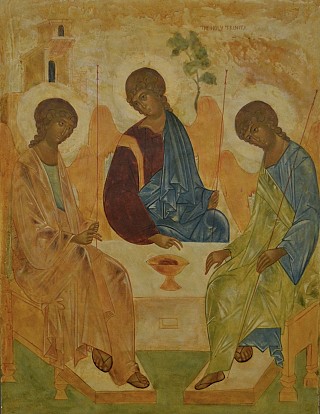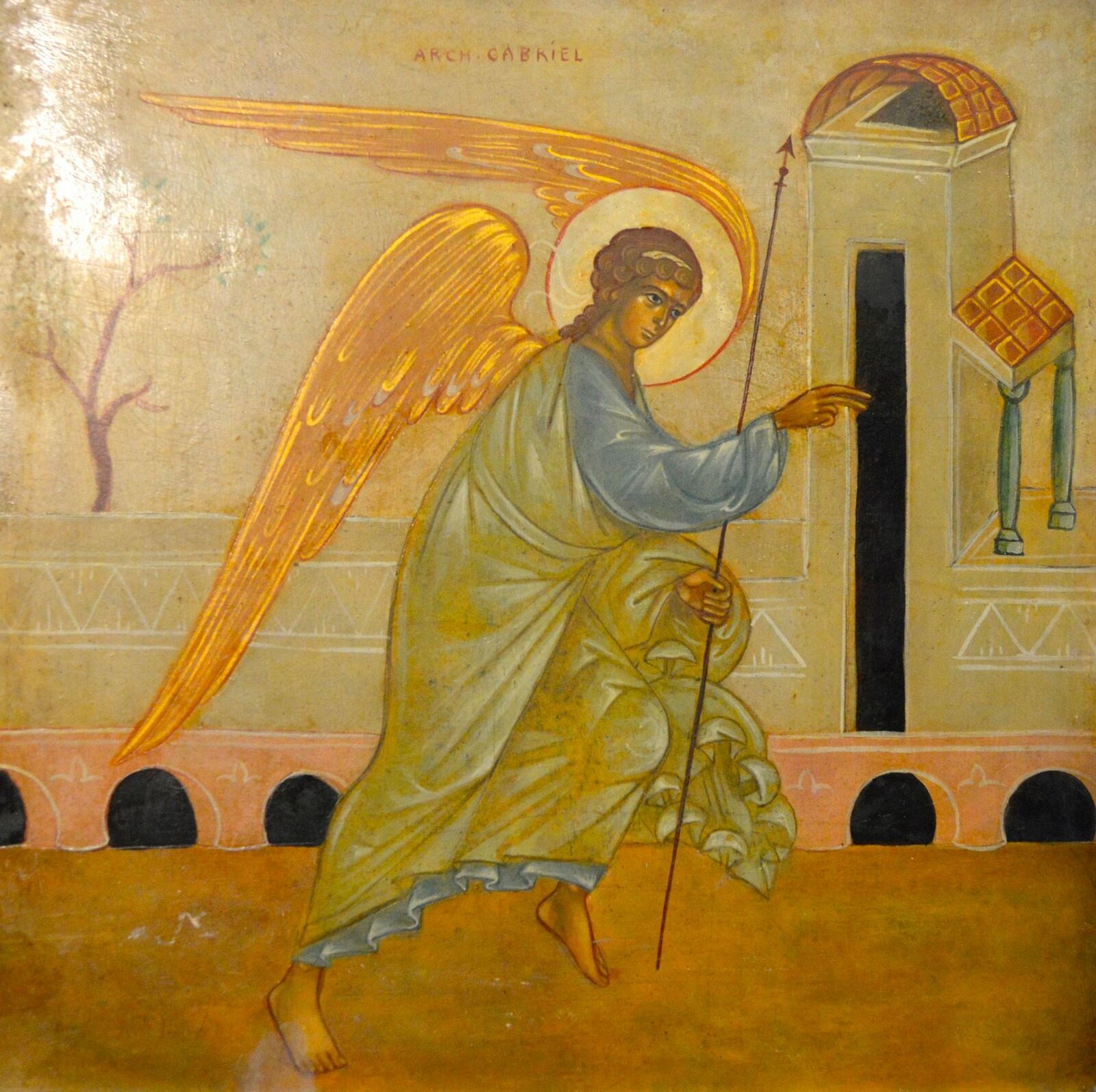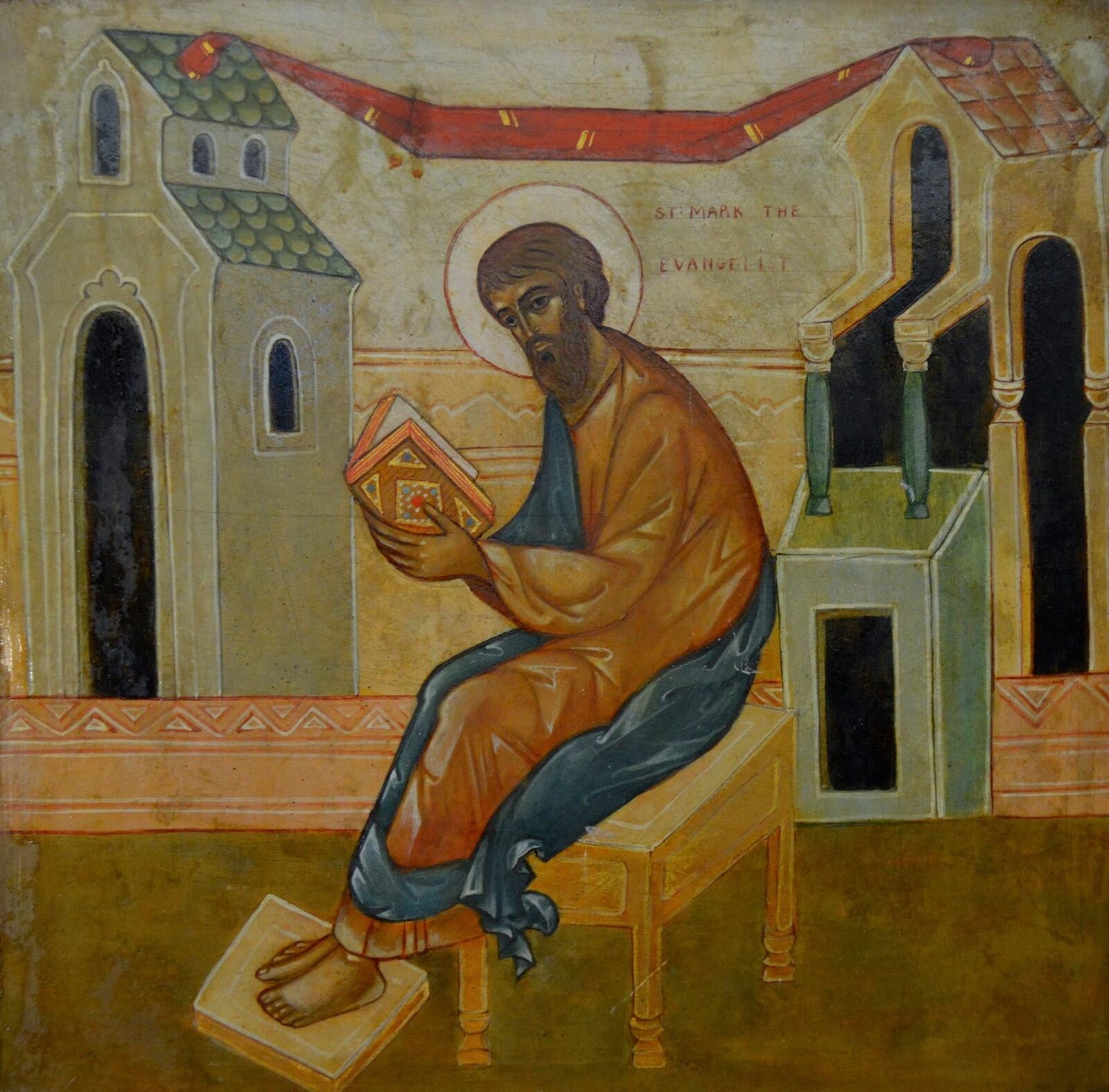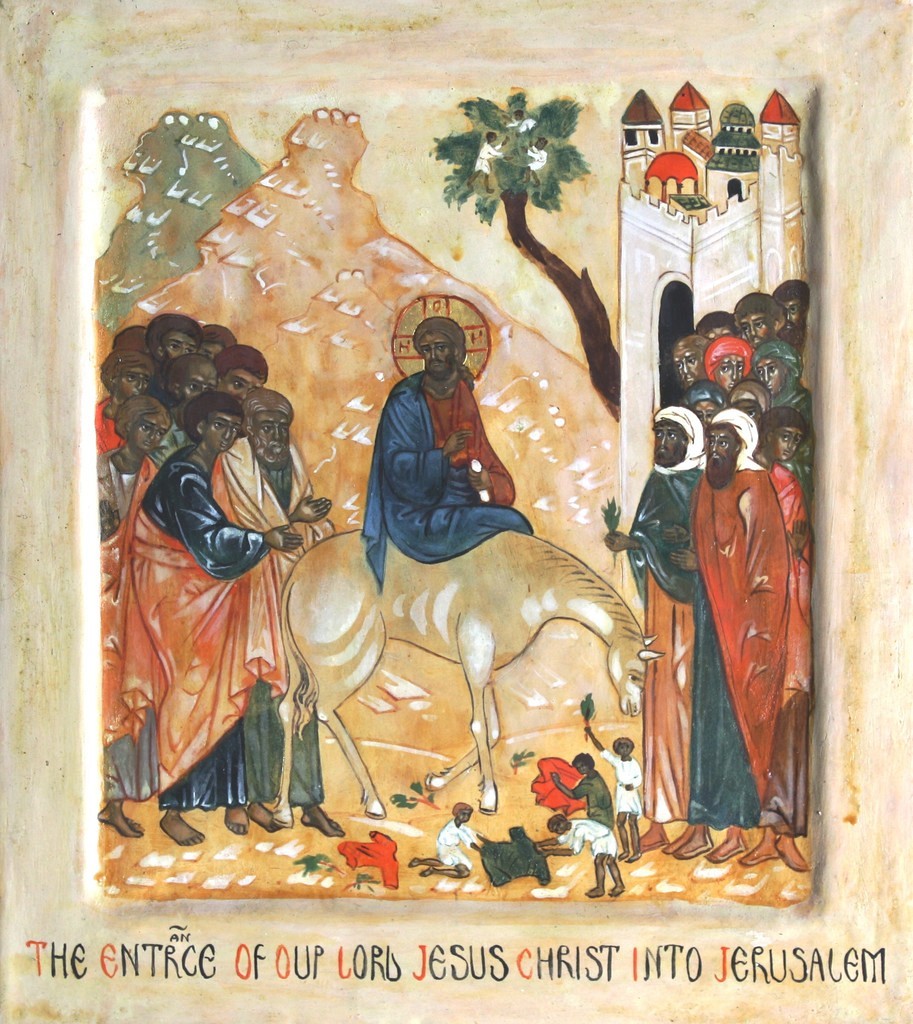Our Church and Iconography
The Temple is an Icon of the Kingdom of God
The entire Orthodox Temple (i.e., Church building) is an icon of the Kingdom of God in Christ. An icon is more than just a religious image, or picture, or empty symbol pointing to a reality somewhere else. An icon re-presents, contains, and shares the reality depicted, as the Son of God, Jesus Christ, is the icon of God (2 Cor. 4:4), being the brightness of His glory and the express image of His person (Heb. 1:3), and human beings are the icon and glory of God (1 Cor. 11:7; Gen. 1:26-27).
Iconography (from Greek: εικoνογραφία) refers to the making and liturgical use of icons, pictorial representations of Biblical scenes from the life of Jesus Christ, historical events in the life of the Church, and portraits of the saints. Icons are usually two-dimensional images and may be made of paint, mosaic, embroidery, weaving, carving, engraving, or other methods. A person who practices the art of iconography is called an iconographer.
Images have always been a vital part of the Church, but their place was the subject of the Iconoclast Controversy in the 8th and 9th centuries, especially in the East. The Sunday of Orthodoxy, the first Sunday of the Great Fast (Lent) every year celebrates the reestablishment of the Orthodox veneration of icons. The use of iconography is considered one of the most distinctive elements of the Byzantine Rite.
Jesus Christ, the Great High Priest, is the Liturgist of the sanctuary and of the true tabernacle which the Lord erected, and not man (Heb. 8:2). The Old Testament tabernacle and temple were copies and shadows of the heavenly things, made according to the pattern shown [Moses] on the mountain (Heb. 8:5; Ex. 25:40). Christ has obtained a more excellent liturgy; He is the Mediator of a better covenant (Heb. 8:6), namely, the New Covenant in His blood upon which the Church is founded, in which the Church participates when it gathers as Church in the Divine Liturgy of Holy Communion (Luke 22:14-30; 1 Cor. 11:17-26).
Therefore the Church in Christ is the reality of the Kingdom of God on earth, the fulfillment of the promises first given to Israel as it was called to worship the true God and live His holy life. Therefore, brethren, having boldness to enter the Holiest by the blood of Jesus…let us draw near with a true heart…not forsaking the assembling of ourselves together (Heb. 10:19-25); but you have come to Mount Zion and to the city of the living God, the heavenly Jerusalem, to an innumerable company of angels, to the general assembly and church of the firstborn who are registered in heaven, to God the Judge of all, to the spirits of just men made perfect, to Jesus the Mediator of the new covenant, and to the blood of sprinkling that speaks better things than that of Abel (Heb. 12:22-24).
Just as Christians who gather for Liturgy are icons of the Icon of Christ and His Kingdom, so the building in which they gather is an icon of the Kingdom; therefore, the Temple is adorned with iconography to reveal its true nature and purpose. This was true of the Old Testament tabernacle and temple (see Ex. 25-31; 3 Kgs.[1 Kg.] 6-7), even more so now that we have inherited the New Covenant in its fulfillment in Christ, His Mother, and all the saints of God. In the Orthodox Temple, the Kingdom of God is both revealed and participated-in. The icons show what God has made us in Christ and what we are ever becoming by His grace. They are not only beautiful, but they are placed in a specific arrangement emblematic of the Kingdom.
Original iconography at St. John's was done by Madame Struve of France when the Church was constructed in 1967. This iconography consisted of the Iconostasis and moveable icons of Feast Days and Saints hung around the walls of the Sanctuary and Nave. Examples of her work are Jesus Christ, the Theotokos and Christ, and the Mystical Supper icons on either side and above the Holy Doors of the Iconscreen (i.e., Iconostasis), and the Three Visitors (i.e., Holy Trinity) icon on the East wall behind the Altar in the Sanctuary. In the mid 1970's, Fr. Philip Koufos, a Priest in the Antiochian Archdiocese, painted the two large icons above the side tables in the Sanctuary: the Nativity of Christ over the Table of Preparation, and St. Herman of Alaska over the table to the right side.
The latest iconography done from August to November of 2015 was written (or, painted) by Ivan Roumiantsev and is quite extensive. This work consists of the following: 1) Christ All-powerful (Gk., Pantokrator) with four Angels and the Four Evangelists on the ceiling; 2) The Theotokos and Christ "Of the Sign" with two Angels with gold-leaf in the upper part of the half-dome over the Altar; 3) Twelve Hierarchs along the bottom of the half-dome, ten along the base and two on the wall below; 4) the Annunciation to the Virgin Mary on the front wall of the Nave over the Iconostasis in the spaces above where the curve of the half-dome meets the wall; and 5) the Icon of Christ "Not-made-by-hands," or Holy Napkin, in the skylight above the Altar.
Our Iconographer: Ivan Roumiantsev
Ivan was born and raised in Moscow, Russia, and graduated from the Moscow Art College in 1991 with a degree in the Restoration of Icons. He wrote (or, painted) his first icon while serving in the army the year after graduating from college. In 1992 Ivan was employed at the Epiphany Cathedral in Moscow for the work of restoration and writing of icons. Since 2001 Ivan has resided in northeast Pennsylvania where he was invited to work at St. Tikhon’s Seminary. His iconographic work includes churches in Oliphant, PA, Brick, NJ, and Connecticut. Ivan came to us after working at St. Nicholas Church in Mogadore (SE Akron), OH.
Ivan writes icons in a later Byzantine style characterized by the Palaeologi era in the 13th and 14th centuries. Features tend to be softer and colors more vibrant, but not overly bright. Each icon is intended to fit within a broader theological vision of the Kingdom of God represented by the entire Orthodox Temple.








The iconographer of the original icons in our Church were written (painted) by the hand of Marie Elchaninoff Struve, who was born in Nice, France in 1925. Her father was the famous Russian Orthodox priest, Father Alexander Elchaninoff, and her mother is the noted iconographer from whoo she learned her art. Madame Struve also studied with one of the most remarkable iconographers of the Russian emigratioon in Europe, the Orthodox nun, sister Joanna Reshlinger. Madame Struve is married to Nikita Struve, the world-famous author, scholar and Orthodox lay leader. The Struves have three children.





